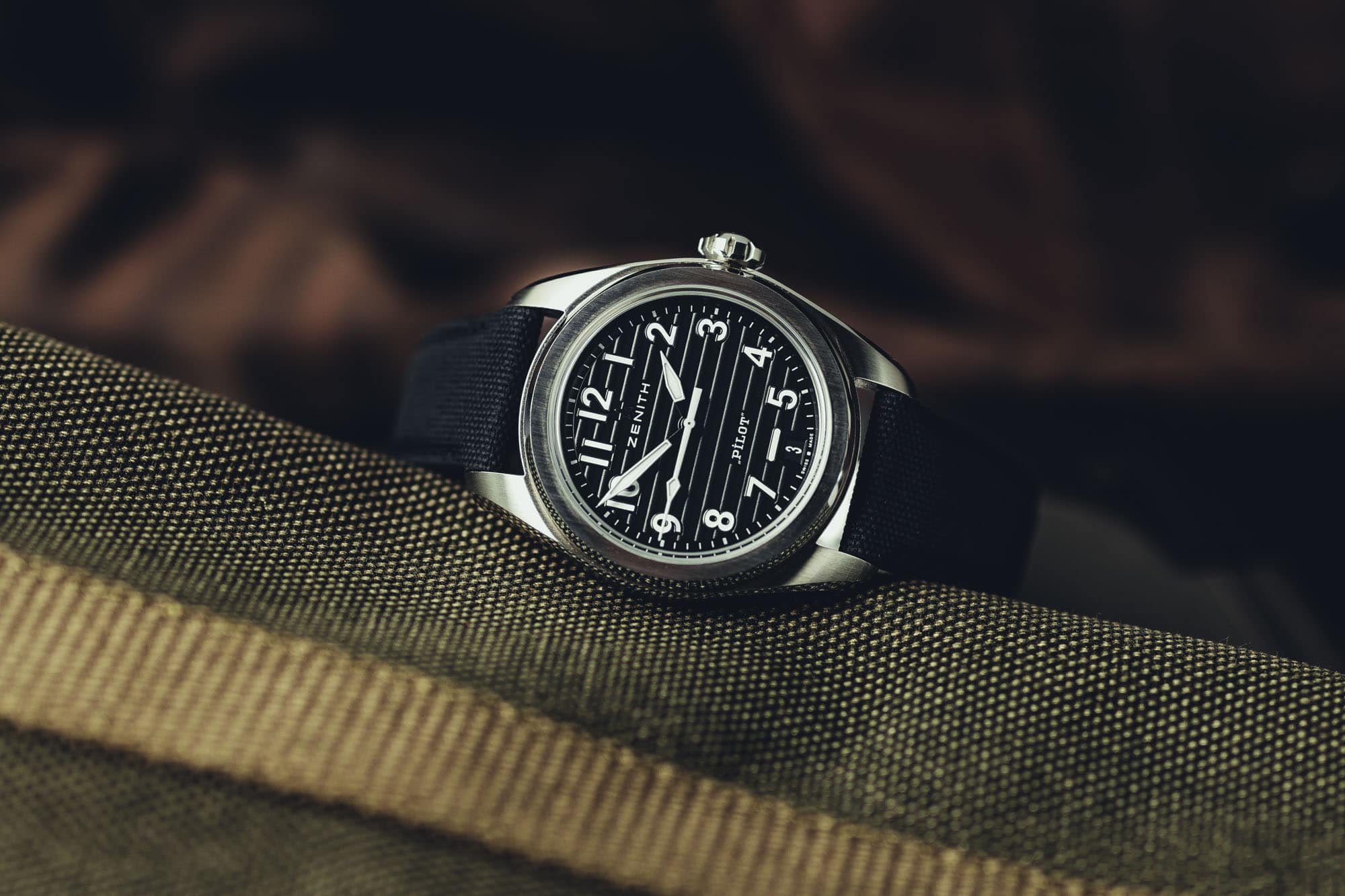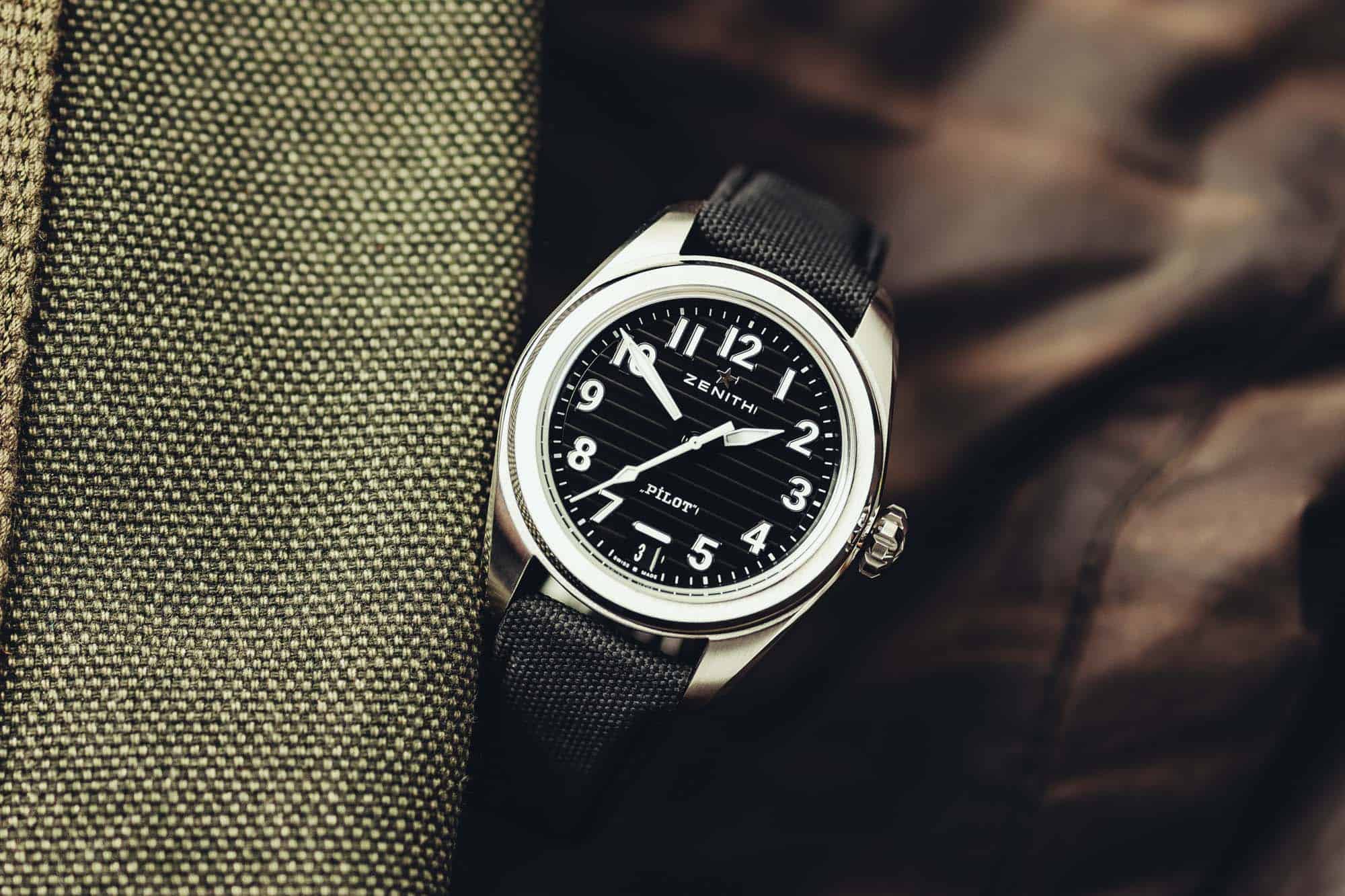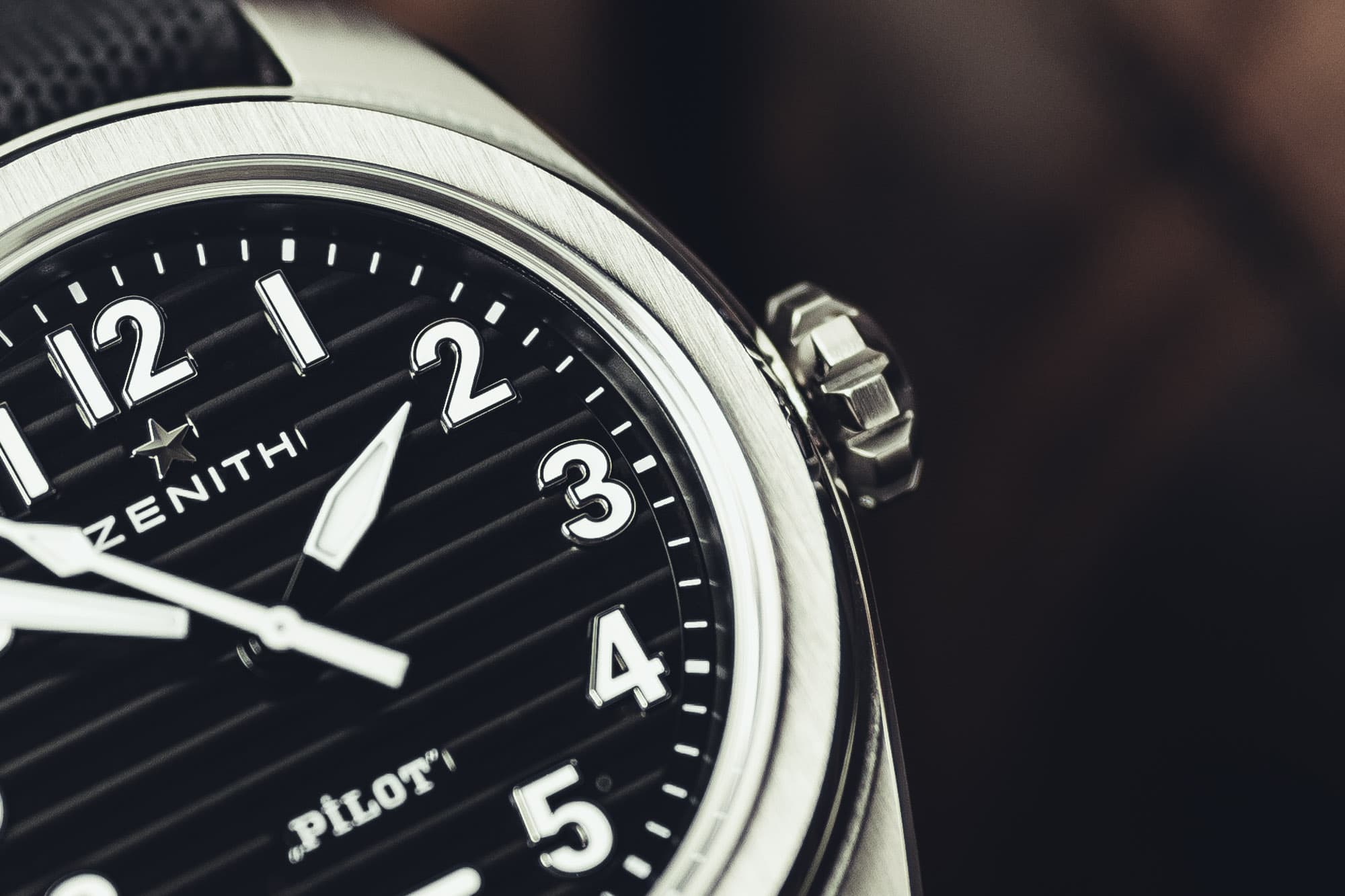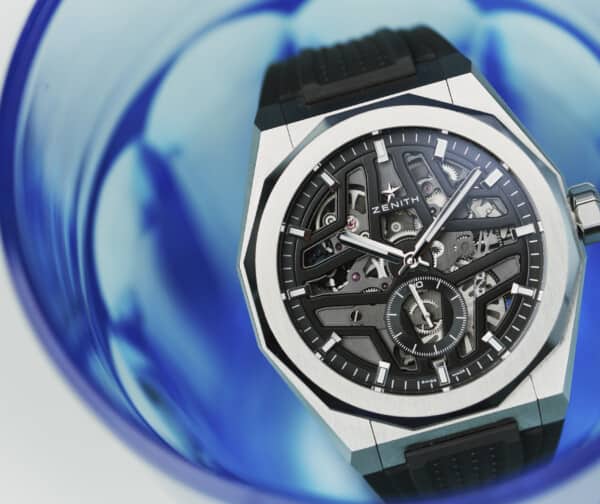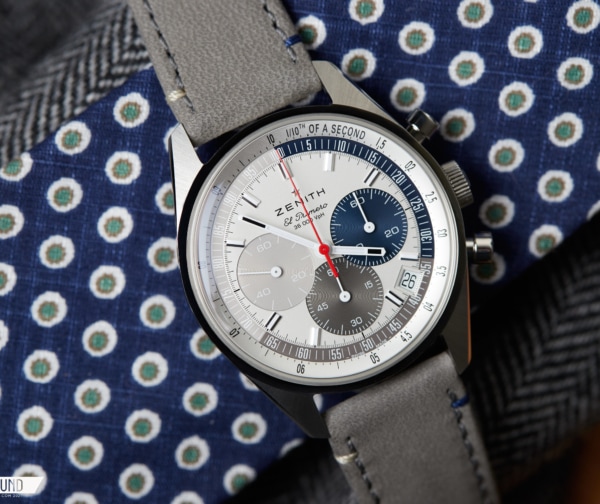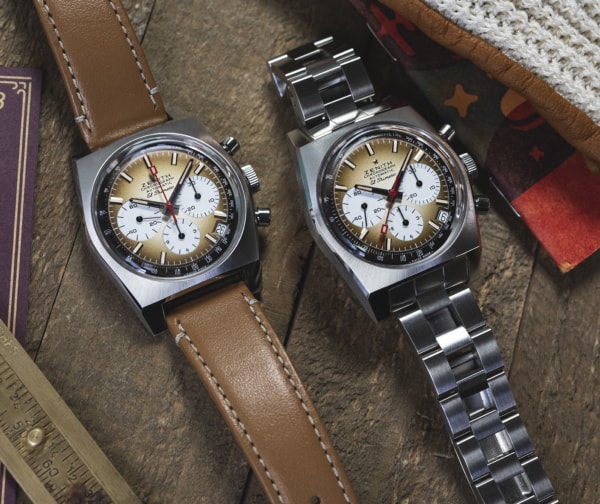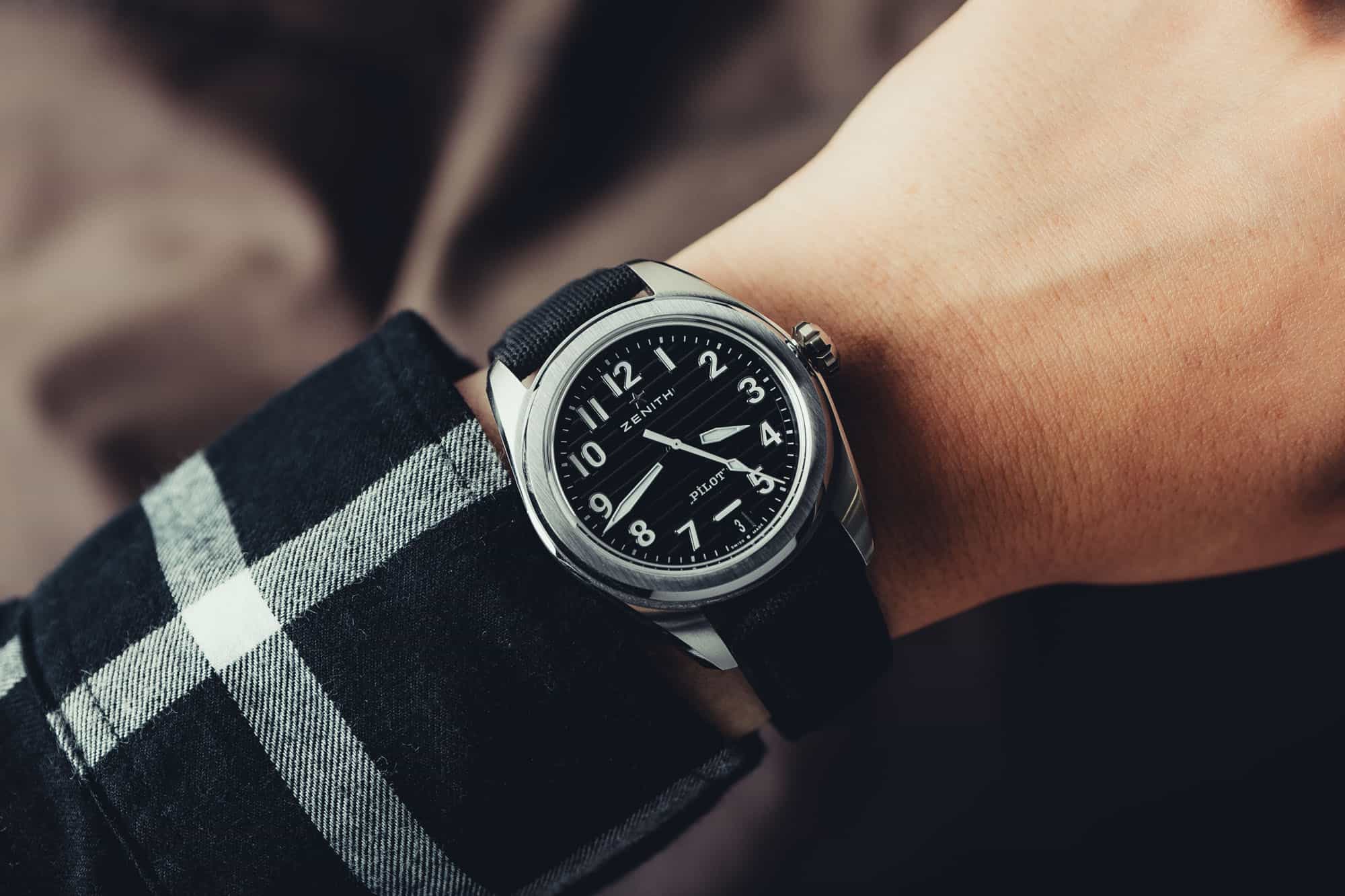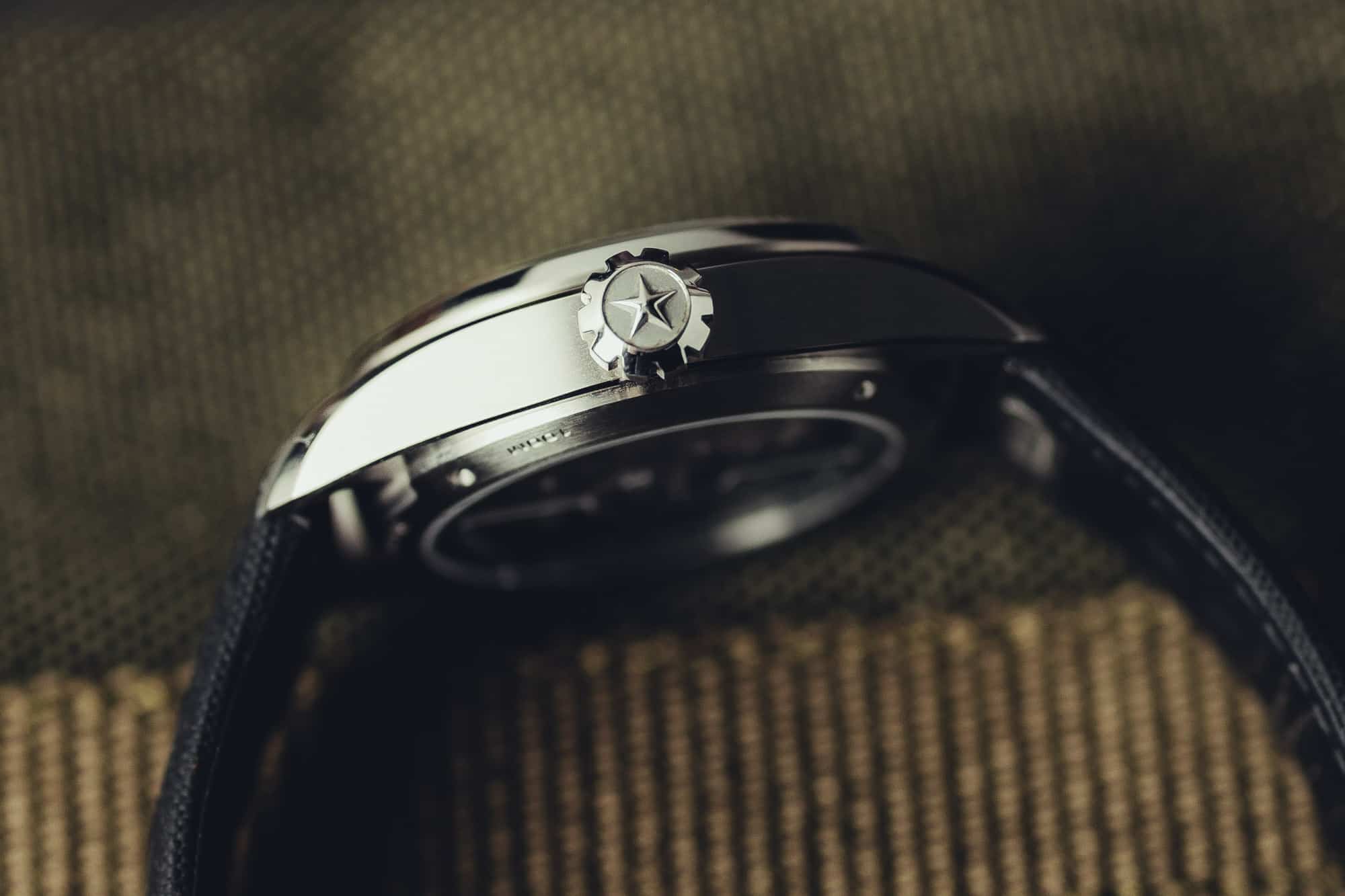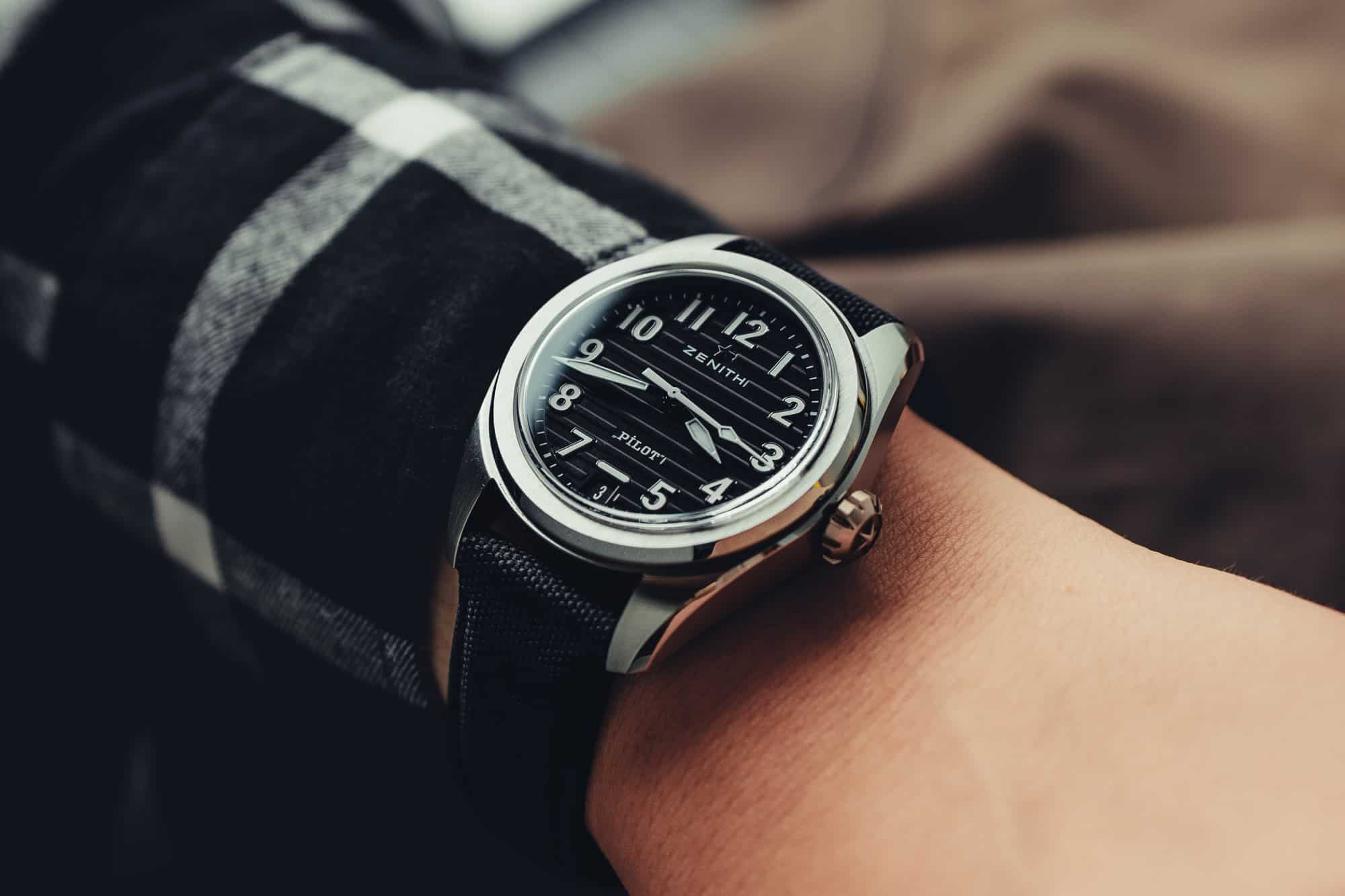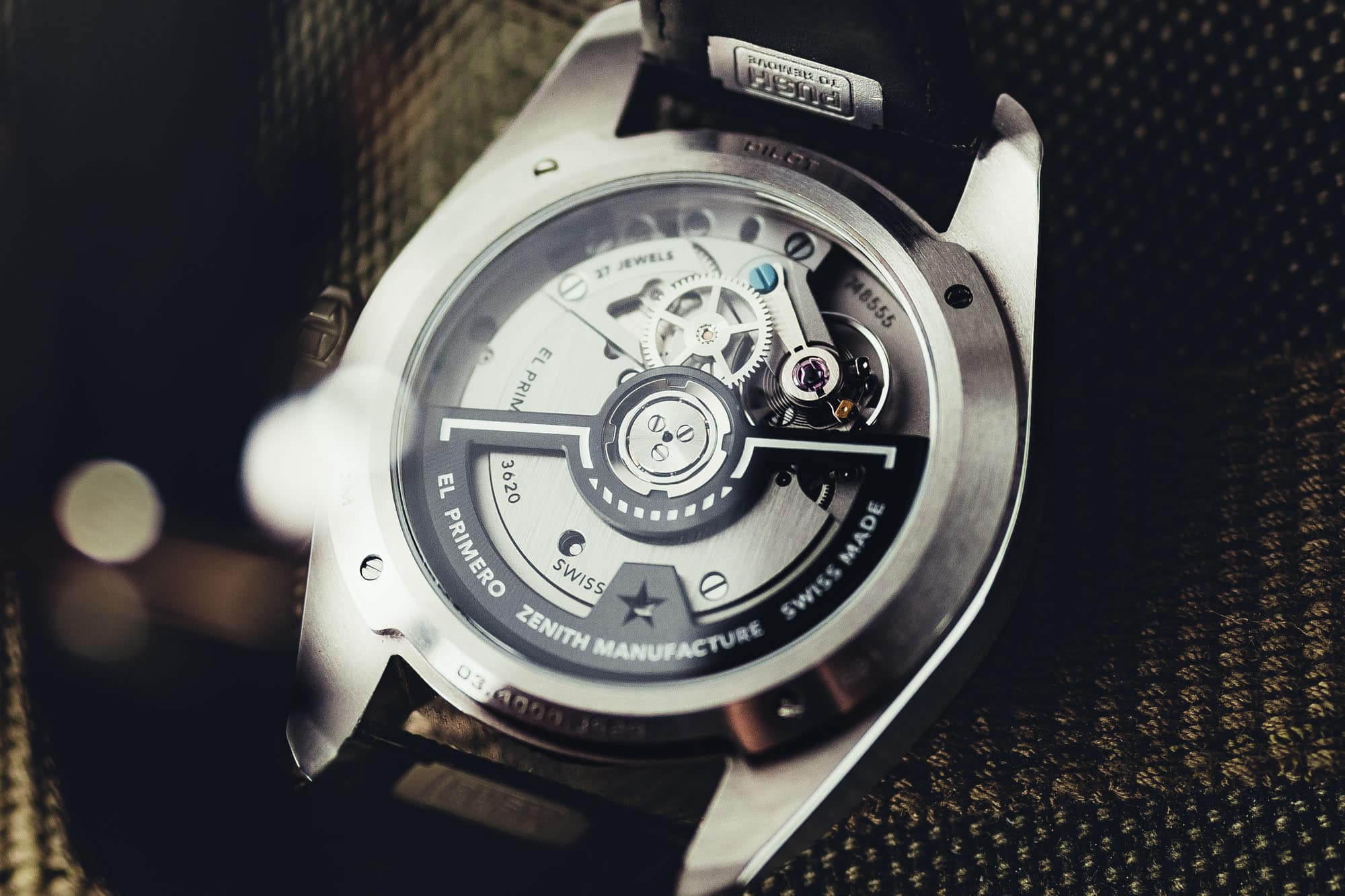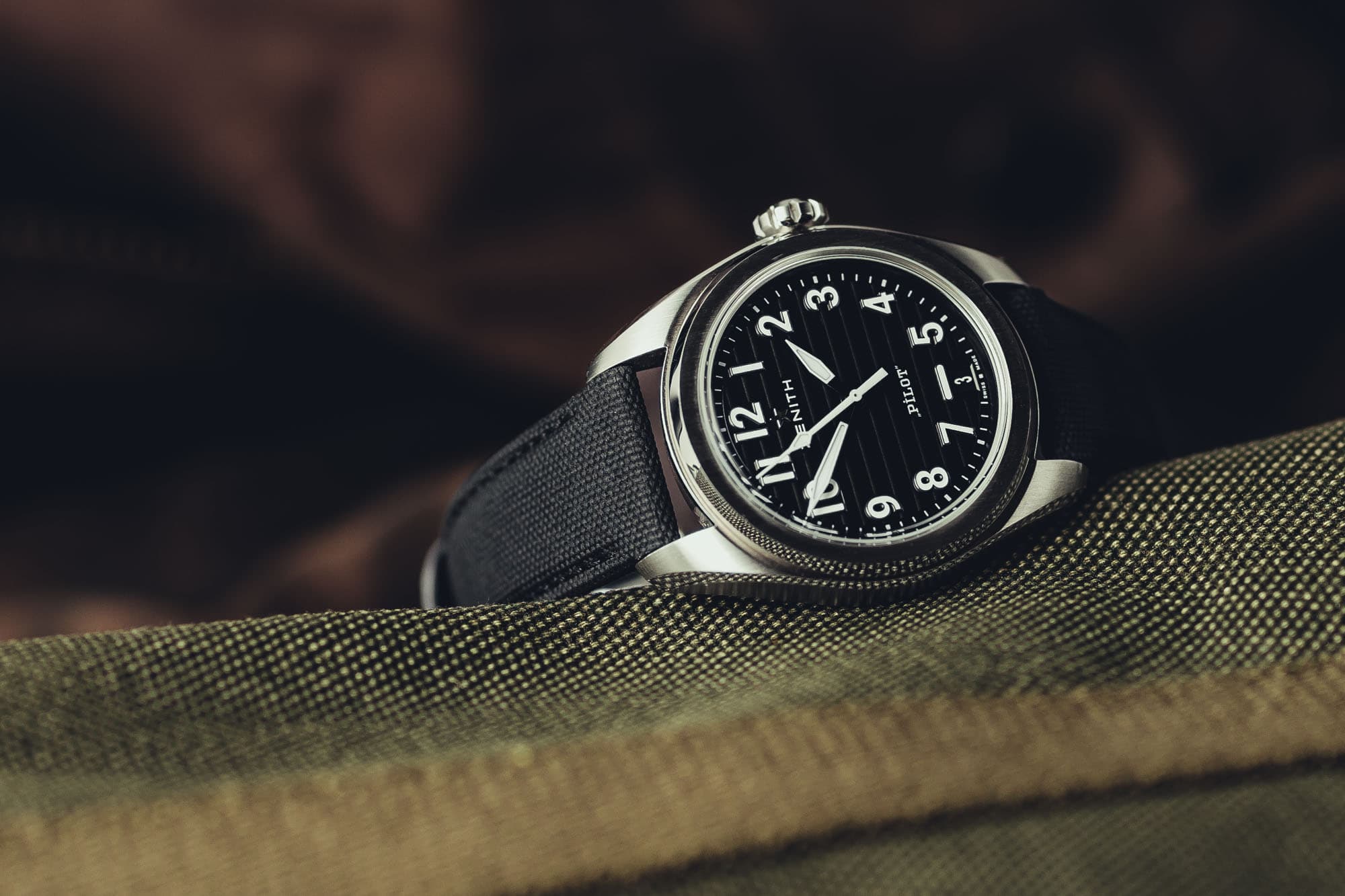Zenith has taken a methodical approach to fleshing out the collections of their 4 families of watches, balancing a weighty heritage against an ethos that forces progress. How they’ve gone about this has been the subject of several of our reviews, and even editorials about the brand’s more recent history. Their newest collection of watches, released earlier this year at Watches & Wonders, explores another realm of the brand’s past: pilot watches. Zenith first filed a trademark for the French term “Pilote” in 1888, decades before the Wright brothers made history in Kitty Hawk, and to this day are the only brand permitted to print the word on the dial (they trademarked the English word “Pilot” in 1904). Zenith has made some unforgettable pilot watches in their day (the A3822 being a personal favorite), but it’s been many years since they’ve done so in a way that’s captured modern enthusiasts.
Zenith has a checkered recent past when it comes to pilot watches, with releases dotted through the 20-teens not quite hitting the notes they needed to lay the groundwork for a permanent collection in the same way their classic sport watches have. But then, Pilot watches are a different breed altogether. Zenith’s approach with their newest collection of Pilot watches feels very different from those recent efforts, and feels like a genuine, modern approach to building a collection with some legs. To get a better sense of that direction, we spent some time with the entry point to the collection, the steel Pilot Automatic.









 Featured Videos
Featured Videos




